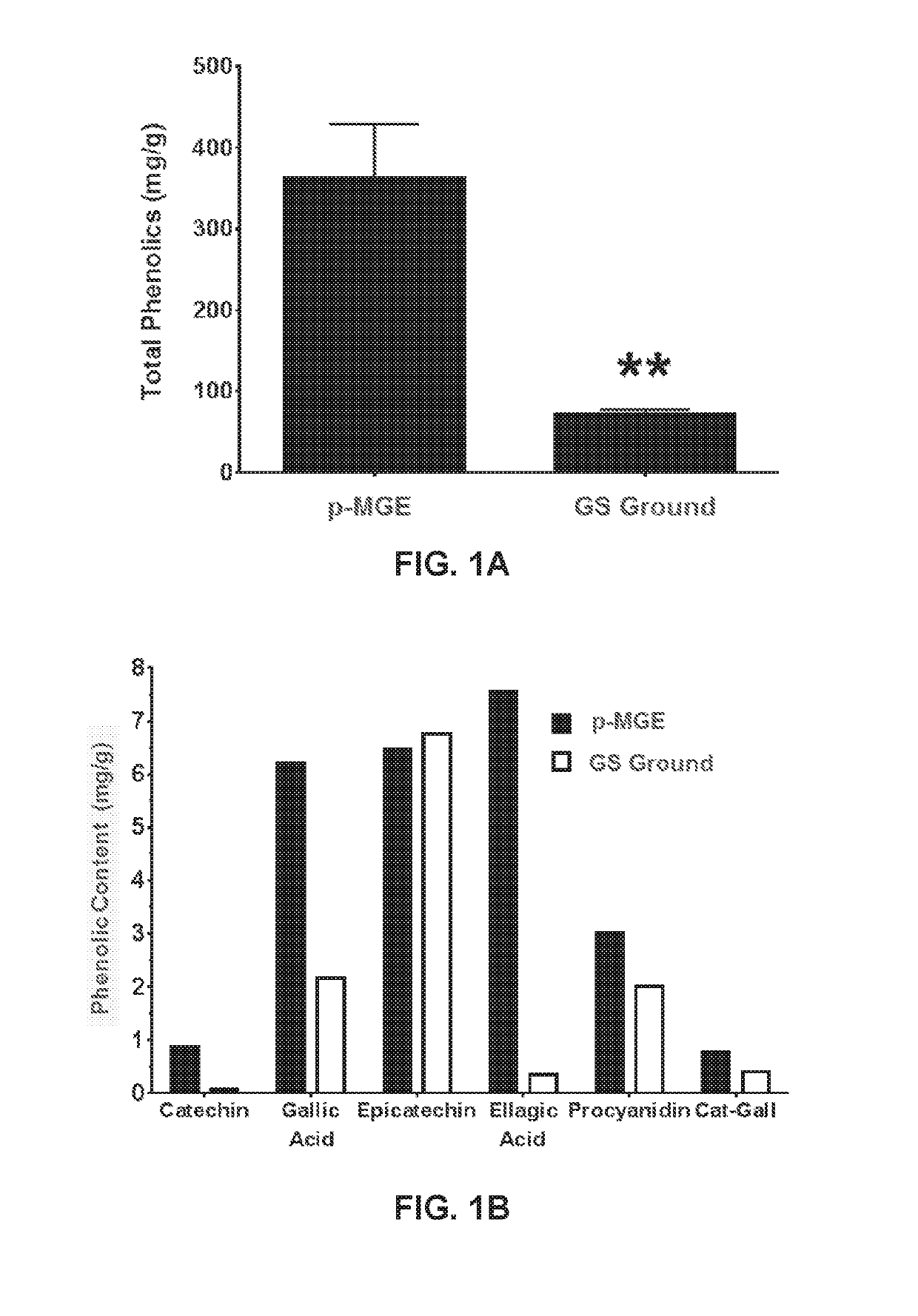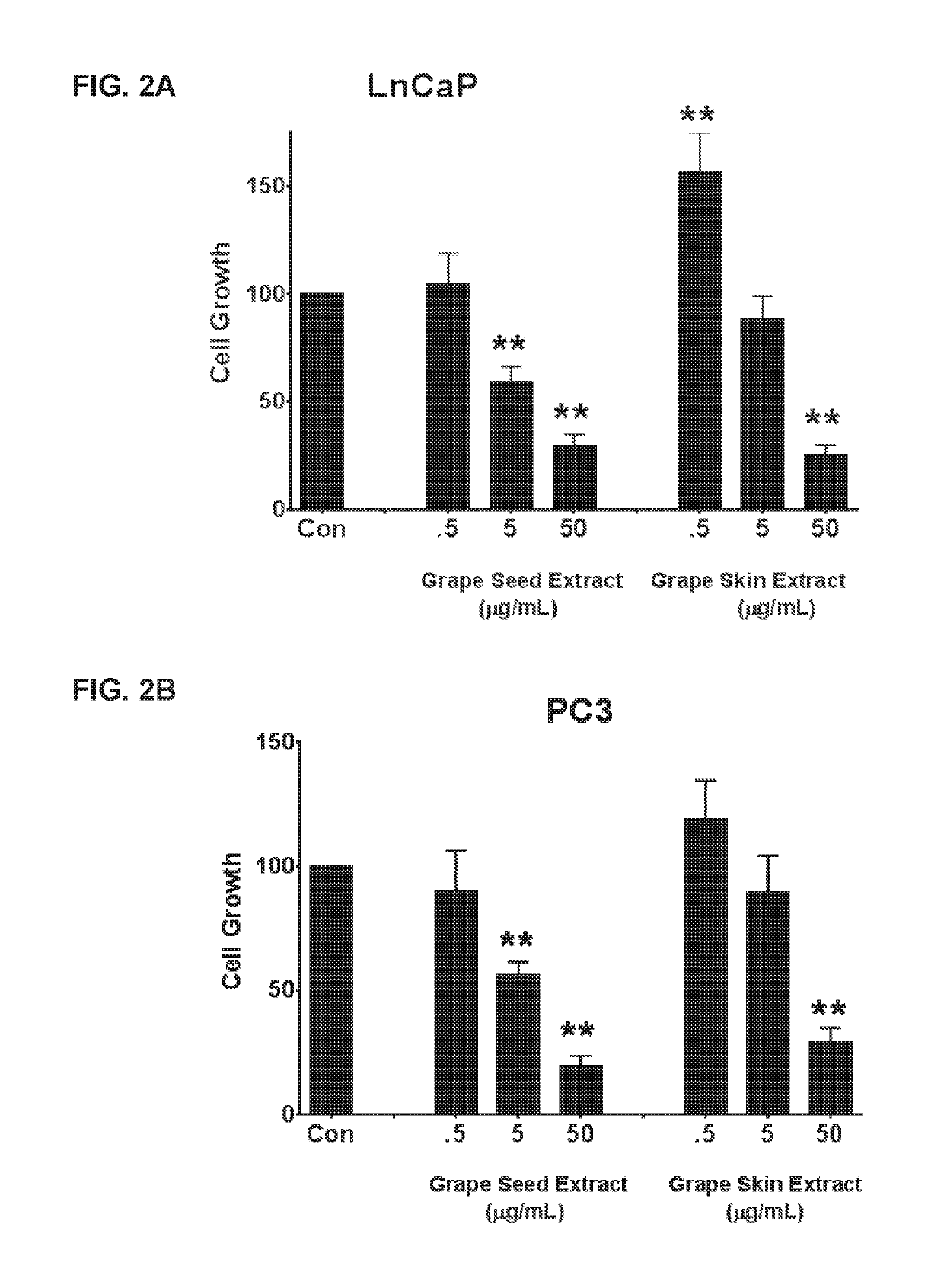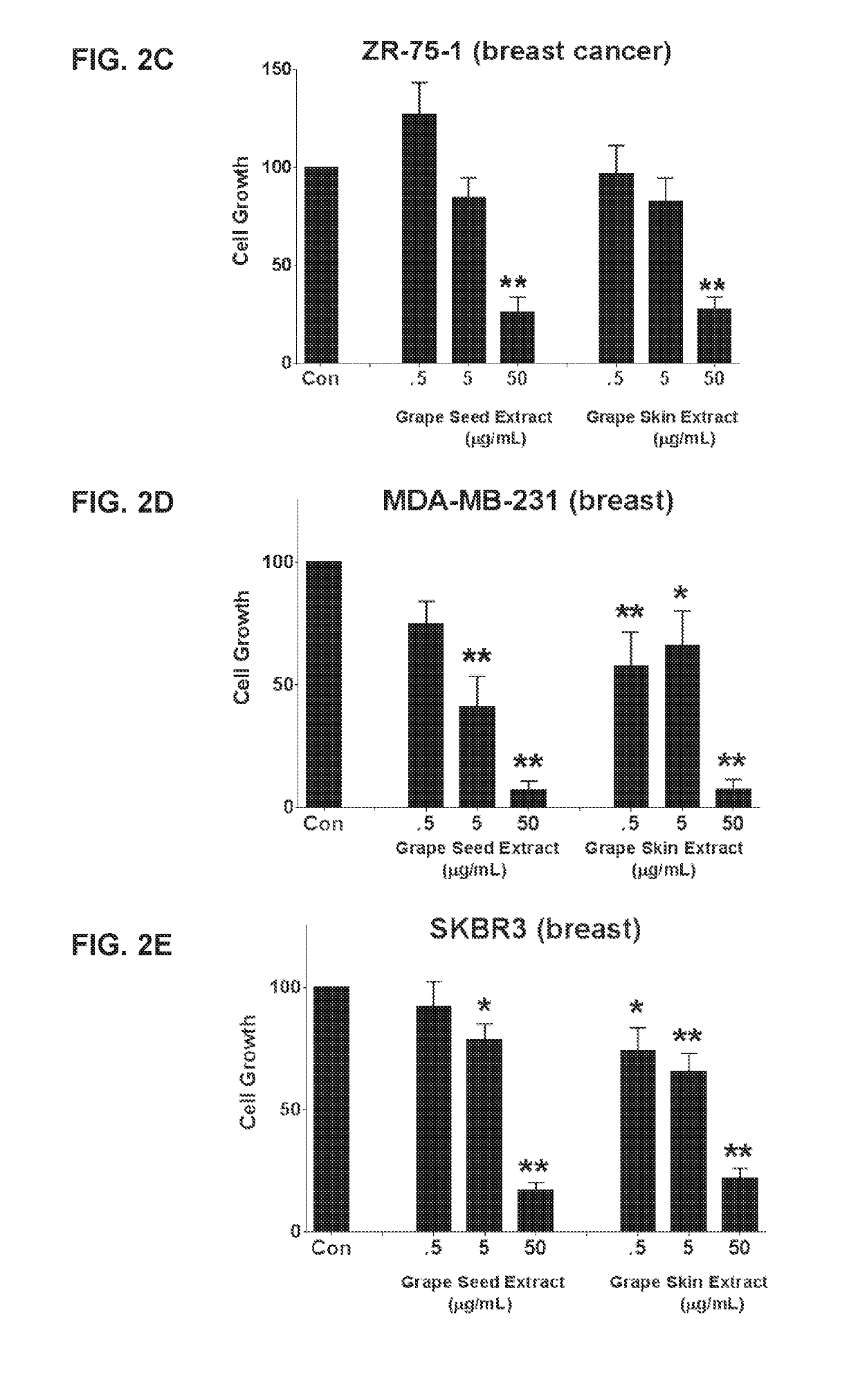Grape extracts and methods of relating thereto
a technology of extracts and fruits, applied in the field of fruit extracts, can solve the problems of not efficiently extracting or preserving valuable compounds from fruits
- Summary
- Abstract
- Description
- Claims
- Application Information
AI Technical Summary
Benefits of technology
Problems solved by technology
Method used
Image
Examples
example 1
Production of Muscadine Grape Seed and Grape Skin Liquid and Powders Extracts
[0238](1) 314 pounds of grape seed and 59 pounds of skins were placed into an open steam kettle.
[0239](2) 100 gallons of fractional vapor compression distilled water was added to the grape seeds and grape skins in the vessel.
[0240](3) The grape seeds and grape skins in the fractional vapor compression distilled water were heated for about 1 hour to about 2 hours at about 175° F. to 200° F. maximum. Extraction was performed at atmospheric pressure. The maximum temperature of 200° F. is set to avoid boiling the grape seeds, grape skins and water because boiling can destroy the phenolic compounds, reducing overall total phenolic compound content in the final extract. During heating, additional fractional vapor compression distilled water was added in 5 gallon increments every 15 to 30 minutes to reach a total of 140 gallons of water. During heating, the mixture of grape seeds, grape skins, and fractional vapor...
example 2
Production of Muscadine Grape Seed Extract
[0260](1) 450 pounds of grape seed were placed into an open steam kettle, and 100 gallons of fractional vapor compression distilled water was added. As in Example 1, an open steam kettle was used but any vessel that can hold the desired amount of water and grape seeds and skins at atmospheric pressure may be suitable.
[0261](2) The grape seeds in the fractional vapor compression distilled water were heated for about 1 hour to about 2 hours at about 175° F. to 200° F. maximum. The maximum temperature of 200° F. is set to avoid boiling the grape seeds and water because boiling destroys the phenolic compounds. During heating, additional fractional vapor compression distilled water was added in 5 gallon increments every 15 to 30 minutes to reach a total of 140 gallons of water.
[0262](3) After heating, the temperature was reduced and the grape seeds in the water were cooled to about 170° F. to about 180° F. and then filtered through a 600 mesh sta...
example 3
Production of Muscadine Grape Skin Extract
[0266](1) 200 pounds of grape skin were placed into an open steam kettle, and 100 gallons of fractional vapor compression distilled water was added. As in Example 1 and 2, an open steam kettle was used but any vessel that can hold the desired amount of water and grape seeds and skins at atmospheric pressure may be suitable.
[0267](2) The grape skins were heated in the fractional vapor compression distilled water for about 1 hour to about 2 hours at about 175° F. to a maximum of 200° F. The maximum temperature of 200° F. avoids boiling the grape skins and water and destroying the phenolic compounds. During heating, additional fractional vapor compression distilled water is added in 5 gallon increments every 15 to 30 minutes for a total of 140 gallons of water added.
[0268](3) After heating, the temperature was reduced and the grape skins in water were cooled to about 170° F. to about 180° F. and then filtered through 600 mesh stainless steel si...
PUM
 Login to View More
Login to View More Abstract
Description
Claims
Application Information
 Login to View More
Login to View More - R&D
- Intellectual Property
- Life Sciences
- Materials
- Tech Scout
- Unparalleled Data Quality
- Higher Quality Content
- 60% Fewer Hallucinations
Browse by: Latest US Patents, China's latest patents, Technical Efficacy Thesaurus, Application Domain, Technology Topic, Popular Technical Reports.
© 2025 PatSnap. All rights reserved.Legal|Privacy policy|Modern Slavery Act Transparency Statement|Sitemap|About US| Contact US: help@patsnap.com



